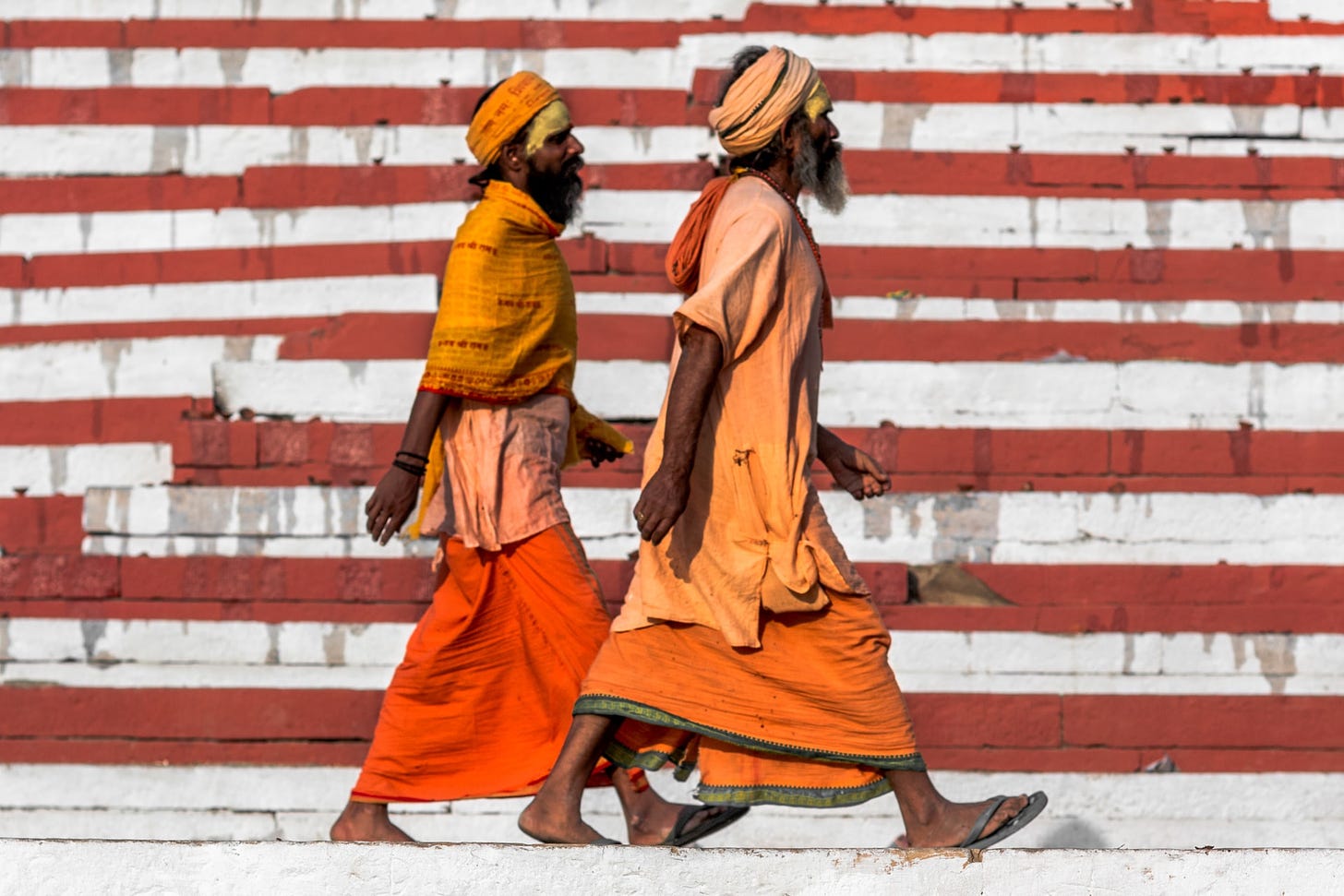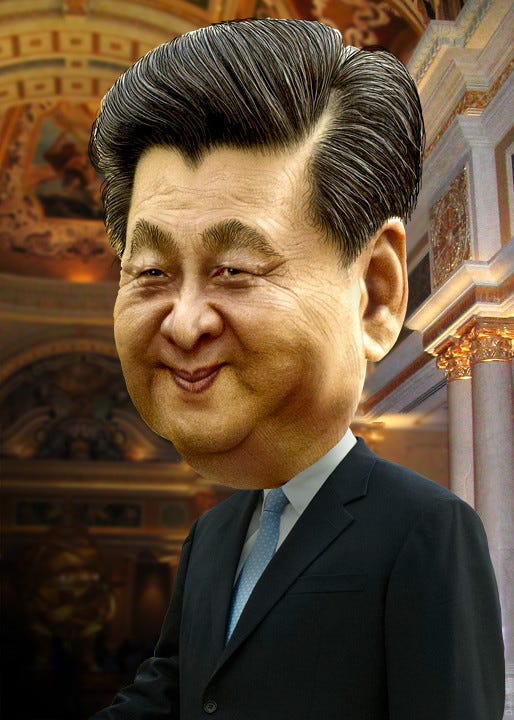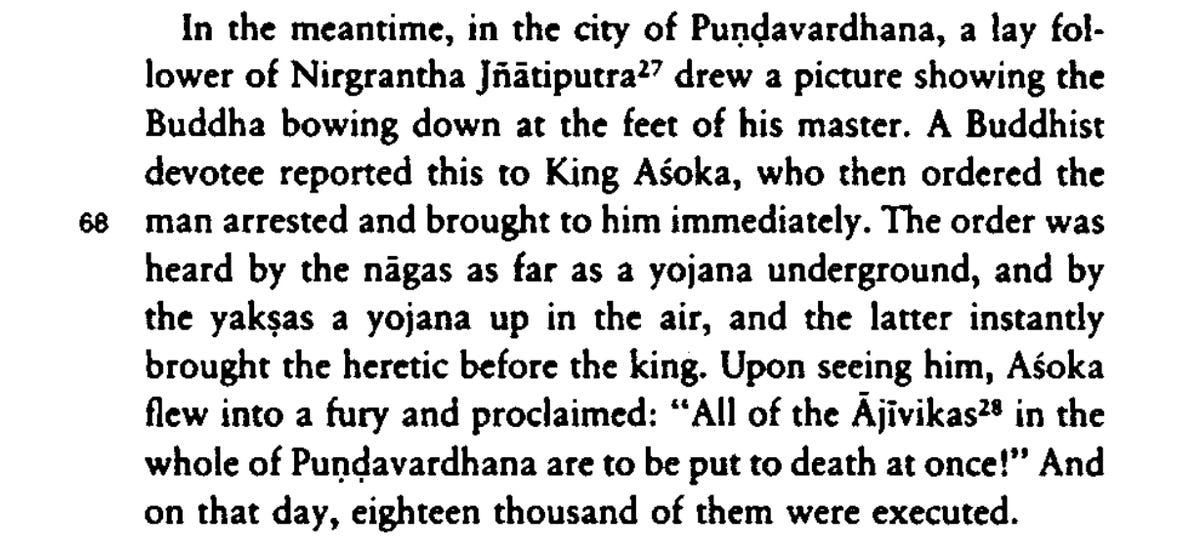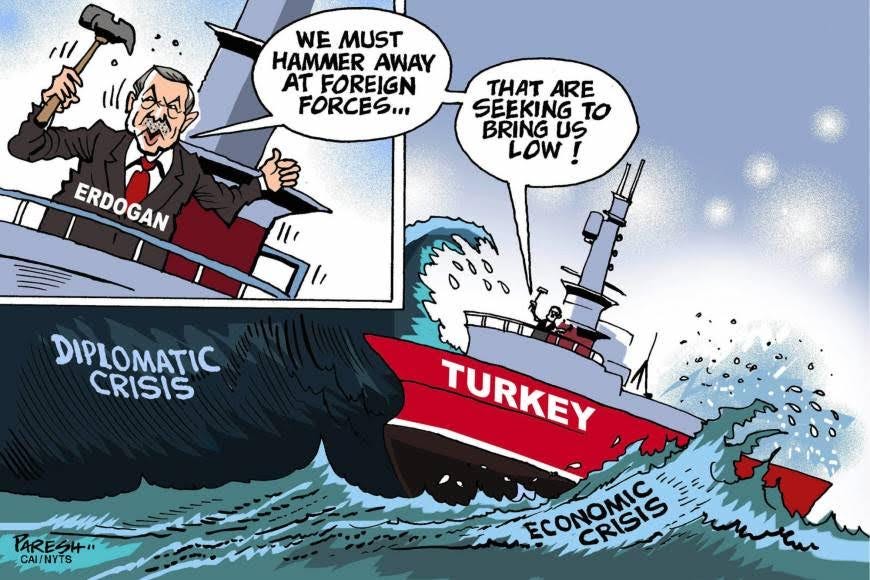Insightful newsletter of Drishtikone: Issue #123 -What is Buddhism?; Was Ashoka REALLY that "Great"?

“Man is not a circle with a single center; he is an ellipse with two focii. Facts are one, ideas are the other.” ― Victor Hugo, Les Misérables
Truth is the battle within for the seekers. It is not about a version of this existence. Not your version or mine. But for knowing and experiencing the existence just the way it is.
In that, there is no Buddha Truth or Shiva Truth or Krishna Truth.
There is just the Truth.
How you approach may be different, but whether you do succeed in annihilating your ideological self and attain to the Truth depends on who you are and what you have left to dismantle.
Buddha’s work in this area was tremendous. He was like no other. Just as many others were before and after him as well. Many beings contributed in different ways and crafted a culture that was based on that seeking. No being could claim a copyright and distinction over the others.
That is why it was fundamentally unspiritual for anyone to even claim Buddhism was a “thing.” It was just another way. Very potent. Very powerful. But just one more way. Among thousands.
So, those who say that “Hinduism destroyed Buddhism in India” understand neither Sanatan Dharma (which culturally was known as Hinduism) nor Buddha and his work.
That someone even thought that he could “convert” to Buddhism, would mean that he was basically dismantling everything about Buddha that he could every access within him. Buddha’s path wasn’t to be “converted to.”
If you were lucky, honest, and steady enough and worked hard enough on yourself, and could manage to get Buddha’s Grace, maybe you could get some benefit from his way.
Just as you would with Krishna’s way. Or Ramana Maharishi’s way. Or Patanjali’s way.
You see there is no branding. These are just ways to open one up. The very idea of conversion in Spirituality is fundamentally un-spiritual.
That, therefore, was the first folly of the entire story of Ashoka. If he thought he was “converting to Buddhism”, it just meant he was going to murder Buddha in him completely. After that, there was nothing left in him to show him any path.
And, that is exactly where he was.
A Buddha-less fanatic.
Xi Jinping and the future of the world
A panel headed by former New Zealand Prime Minister Helen Clark and former Liberian President Ellen Johnson Sirleaf is working on a report on the events surrounding the COVID Wuhan pandemic. The report of his independent panel will be out in November. If it shows, as is the estimation, that the pandemic started way back and China hid it while trying to fool the world, there may be a major reset in the world with respect to China.

(Source: Flickr\DonkeyHotey)
Defence industry consultant and former British Army Officer Nicholas Drummond feels that this will be a reflection on the Chinese leadership, which was playing games since September, when the pandemic really started, as opposed to December, as has been suggested.
“The lack of leadership from China, that inscrutable lack of openness led to a global crisis, and China did that deliberately so it could emerge from the pandemic in a stronger economic position.” (Source)
Now, we all know that the National People's Congress had passed a law in 2018 to give power to Xi Jinping for life.
That could well be in peril now.
To improve China’s relationship with the world and not pre-empt another Cold War, the leadership in China may want Xi to step down. What will that mean for China?
"This could mean that CPC forces XI Jingping to step down. It would be an act of contrition that would help to restore more positive Sino-Western relations. If Xi refuses to go, there could be a power struggle and China could unravel from within, but this is an unlikely scenario. If Xi is as powerful as some think he is, then nothing will happen. But this will accelerate a new Cold War." (Source)
The options for China extend from unraveling - maybe like the Soviet Union - or steaming ahead into a protracted Cold War. How powerful Xi is will define the future of the world.
Ashoka the Jihadi or Ashoka the Great?

Indian history is a virtual lie. And, as it remains in the hands of Communist HIstorians, the depth of lie increases by the day. Sometimes, one doesn’t know whom to consider as a great and whom not to. The baggage of our conditioning is so heavy that we have to be literally pushed to take it off.
First and foremost, notice the plurality of the claim. It is presented as if such action or set of actions were an institutional occurrence. However, when you go into the claims by the Indian historians, you find only one example. Let us read that claim from the very mouth of one such historian – Gargi Chakravartty.
“Another myth has been meticulously promoted with regard to the tolerance of the Hindu rulers. Let us go back to the end of the second century BC. Divyavadana (sic), in a text of about the second-third century AD, depicts Pushyamitra Shunga as a great persecutor of Buddhists. In a crusading march with a huge army, he destroyed stupas, burnt monasteries, and killed monks. This stretched up to Shakala, i.e. modern Sialkot, where he announced a reward of 100 gold coins to the person who would bring the head of a Buddhist monk. Even if this is an exaggeration, the acute hostility and tensions between Pushyamitra and the monks cannot be denied.”
As may be known to an amateur historian even, Divyavadana is not a person but the name of a book. But then, when these Communists Historians rise to fame on the back of nepotism (as exposed by the Allahabad High Court itself!) as opposed to actual scholarship, such confusions can be expected.
So it was after all the act of Pushyamitra that was painted across the entire Hindu history to make a claim that is remarkably mischievous and Machiavellian. First, there is enough confusion about Pushyamira’s actions. Second, the only reason why he would have “persecuted Buddhists”, as some ideological historians would like to suggest is because of bad advice he got from his advisors who wanted that action for political reasons.
More importantly, the entire Buddhist persecution by Hindus myth has been constructed on the edifice of Pushyamitra’s negative portrayal, which has yet to be proven conclusively. Beyond this one man, who acted out of bad advice or bad judgment, one does not find any other such occurrence.
Seculars also have another myth - this one about Ashoka.
It is said that after the dastardly ambitious king Ashoka (a Hindu of course by then) had seen a lot of bloodshed in the Battle of Kalinga, he converted to Buddhism. And from then, everyone lived happily ever after.
Right? That is how the story goes?
First, let us get the conversion of Ashoka to Buddhism because of Kalinga out of the way. One, there is little evidence to prove that. Second, there is more acceptance amongst scholars that his conversion predated the Kalinga war. And his conversion had more to do with his own ambitions than with any sense of repentance.
All accounts agree that Ashoka’s early rule was brutal and unpopular, and that he was known as ‘Chandashoka’ or Ashoka the Cruel. According to mainstream textbook narratives, however, Ashoka would invade Kalinga a few years later and, shocked by the death and destruction, would convert to Buddhism and become a pacifist. The reader will be surprised to discover that the popular narrative about this conversion is based on little evidence. Ashoka would invade Kalinga in 262 BC whereas we know from minor rock edicts that Ashoka had converted to Buddhism more than two years earlier. No Buddhist text links his conversion to the war and even Ashoka’s eulogists like Charles Allen agree that his conversion predated the Kalinga war. Moreover, he seems to have had links with Buddhists for a decade before his conversion. The evidence suggests that his conversion to Buddhism was more to do with the politics of succession than with any regret he felt for sufferings of war. (Source)
Further, the characterization of Ashoka as “the Great”. Interestingly, Buddhist history writing itself doesn’t back that up!
Ashokavadana (Ashokavadana, also known as Ashokarajavadana, is one of the avadana texts contained in the Divyavadana (Divyāvadāna, "Divine Narrative"), an anthology of several Buddhist legends and narratives.) mentions the following:

“The Legend of King Aśoka: A Study and Translation of the Aśokāvadāna”, by John S. Strong pg 232
It is further mentioned that only when Vitashoka, an enlightened Buddhist Monk of the Theravada Buddhist order was killed, mistaken for a Nirgrantha (Jain Monk) / Ajivikas (Ascetics), that the order to kill the Jain Monks was revoked by Ashoka. [It is not clear completely whether the order was against Ajivikas – the Ascetic Monks of a Hindu order or Nirgranthas, the Jain Monks]
So, if we were looking for a fanatic who would kill others due to a different belief – the equivalent of the Modern Day Islamic Jihadis – in India’s history, the Ashoka is the one who comes closest to that description.
(Please read this article for more details - Ashoka the great was India’s first religiously fanatic Jihadi)
Arabs and Turks - the new enemies
There exists a land-for-peace principle established by the Arab Peace Initiative created by Saudi Arabia in 2002. This has been against peace deals with Israel. The new agreement between the UAE and Turkey went against that.
Why?
Because Turkey is assuming a far bigger threat to the Arab world that Israel is. An article in Jordan Times articulated the Turkey threat very clearly.
Turkish troops and Ankara backed militias are active in three Arab countries; Libya, Syria, and Iraq. This is a geopolitical reality that the Arab world, as well as the international community, must acknowledge and react to. In fact, Turkey’s territorial, political and economic ambitions in these countries and beyond are advertised by top Turkish leaders including President Recep Tayyip Erdogan. Turkey now has military bases in Qatar, Libya, Somalia, Northern Cyprus, Syria, and Iraq; and not all with the consent of legitimate governments. Turkey’s involvement in Libya is the latest implementation of a policy to redefine Ankara’s regional role as envisioned by Erdogan. Last week, Turkish Defence Minister Hulusi Akar and Chief of General Staff Yasar Guler paid a visit Tripoli and held talks with political and military leaders of the UN-backed Government of National Accord (GNA). (Source)

Meanwhile, France has also started pushing its weight in the Arab world. After the recent explosion and events in Lebanon, Macron visited Beirut to set the context there in terms of the threat from Turkey, which was particularly perturbed by his visit there.
During that trip, when he was mobbed by crowds asking him for assistance, the French president accused regional countries such as Turkey of seeking to promote their interests in Lebanon at the expense of the country. “If France doesn’t play its role, Iranians, Turks and Saudis will interfere with Lebanese domestic affairs, whose economic and geopolitical interests are likely to be to the detriment of the Lebanese," he reportedly said last week. (Source)
Meanwhile, Erdogan and his army meanwhile have big ambitions in the Arab world.
confronting UAE-backed forces in Libya, or upholding Palestinian rights in Jerusalem, or bombing the Kurdistan Workers’ Party in Iraq, or targeting President Bashar al-Assad’s forces in Syria (Source)
That is why the action by UAE was not in context with Iran, but Turkey.
Ankara is the new Arab villain that pales the threat from Israel.
nota bene
Delhi Riots co-conspirators: The Delhi Police on Saturday named Swaraj Abhiyan leader Yogendra Yadav, CPI (M) general secretary Sitaram Yechury, documentary filmmaker Rahul Roy, Delhi University professor and activist Apoorvanand, economist Jayati Ghosh as co-conspirators in Delhi riots that occurred in February in their supplementary charge-sheet. According to the news agency, they were named accused based on the confession of three students--women’s collective Pinjra Tod members and JNU students Devangana Kalita and Natasha Narwal, and Gulfisha Fathima of Jamia Milia Islamia. (Source)
Pak gang rape of French lady: Protests broke out in Pakistan on Friday after the brutal gang-rape of a woman in front of her children after her car broke down on a motorway. The anger of the protestors was further exacerbated by the fact that police appeared to blame the victim after the horrific incident. The victim is a resident of France. The woman had alleged that she was gang-raped in front of her kids by multiple men when her car ran out of fuel in Lahore. She had claimed that she called the police when she ran out of fuel, but as she waited, two men suddenly came up, and broke the windows of her car. Afterward, they proceeded to drag her and her two children out of the vehicle and raped her multiple times in front of her children. (Source)
Universe is a Neural Network: In a provocative preprint uploaded to arXiv this summer, a physics professor at the University of Minnesota Duluth named Vitaly Vanchurin attempts to reframe reality in a particularly eye-opening way — suggesting that we’re living inside a massive neural network that governs everything around us. In other words, he wrote in the paper, it’s a “possibility that the entire universe on its most fundamental level is a neural network.” (Source)
About 100 Earthquakes in 24 hours!: A swarm of 91 earthquakes rattled the Yellowstone National Park region in just 24 hours on Thursday, according to the United States Geological Survey. The quakes trembled southwest of Yellowstone Lake between Heart Lake and West Thumb. (Source)
Oregon Scorched: Hundreds of firefighters battled two large wildfires Friday that threatened to merge near the most populated part of Oregon, including the suburbs of Portland, and the governor said dozens of people are missing in other parts of the state. The state’s emergency management director, Andrew Phelps, said officials are “preparing for a mass fatality event” and that thousands of structures have been destroyed. (Source)
Kashi’s street food
India is the ultimate destination for street food. And within India, no other state - in my view - comes close to Uttar Pradesh in terms of the types of chaats, sweets, and the local street food you can have. If you like those kinds of things, you can live off of street food with some of the most delicious stuff to taste.
This is a video by Luke Martin and Sabrina Davidson, who are based in Taiwan but travel across the world to taste the food. The link to this video on Youtube has the addresses and more details of the restaurants they visited.
Quite unlike most non-Indians, I found their review of the food quite authentic and one which was close to what the food was, as opposed to their own bias towards the taste of a certain kind. They were open and their explanations very real.
Of course, the food they show is to die for. So, the next time you visit Varanasi, visit these places - apart from experiencing the most amazing place on earth.
Support Drishtikone
If you consider our work important and enriching and would like to contribute to our expenses, please click on the button below to go to the page to send in your contribution. You can select the currency (for example, INR or USD, etc) and the amount you would like to contribute.
If you like this post - please share it with someone who will appreciate the information shared in this edition -
If you like our newsletter, please share it with your friends and family -



